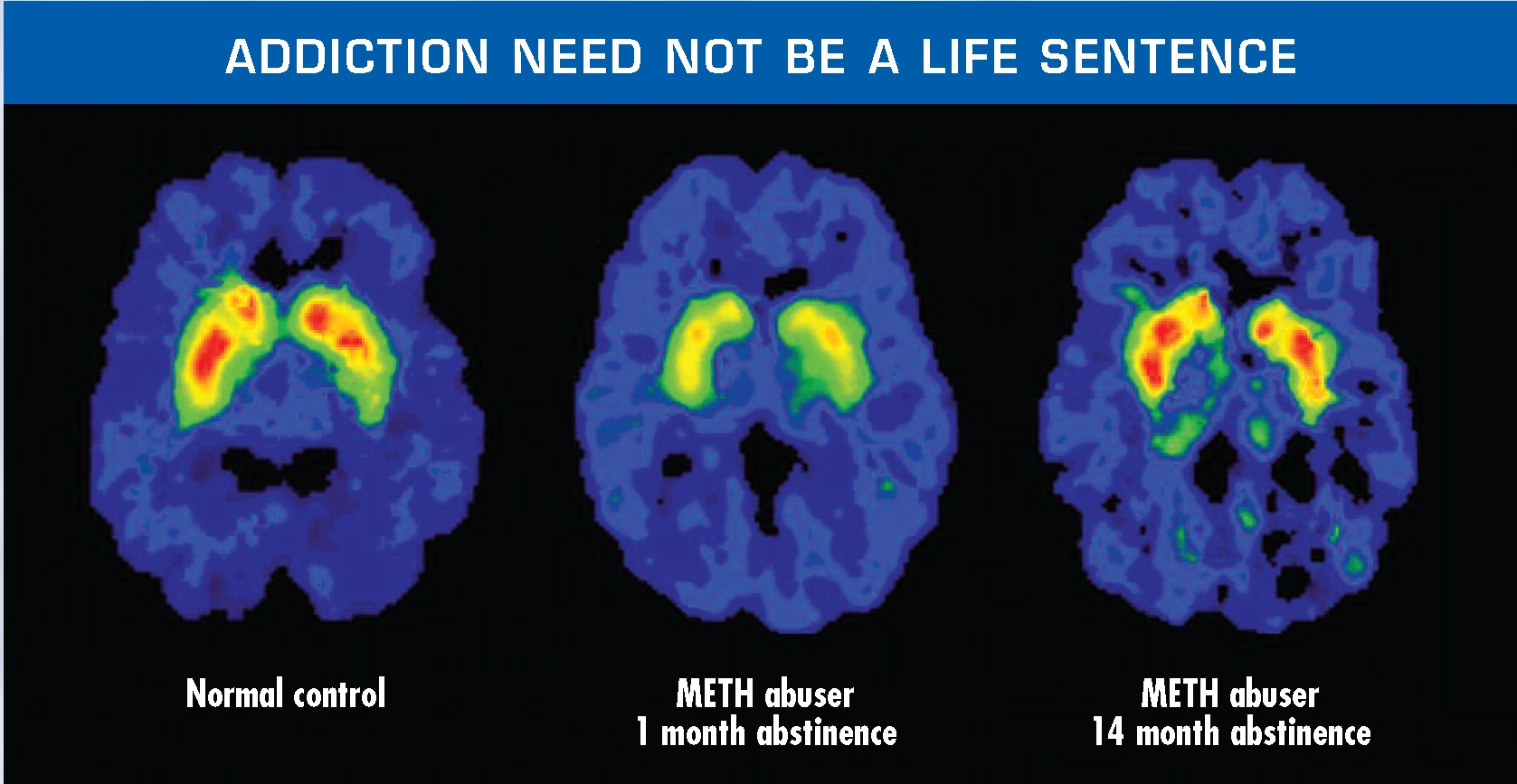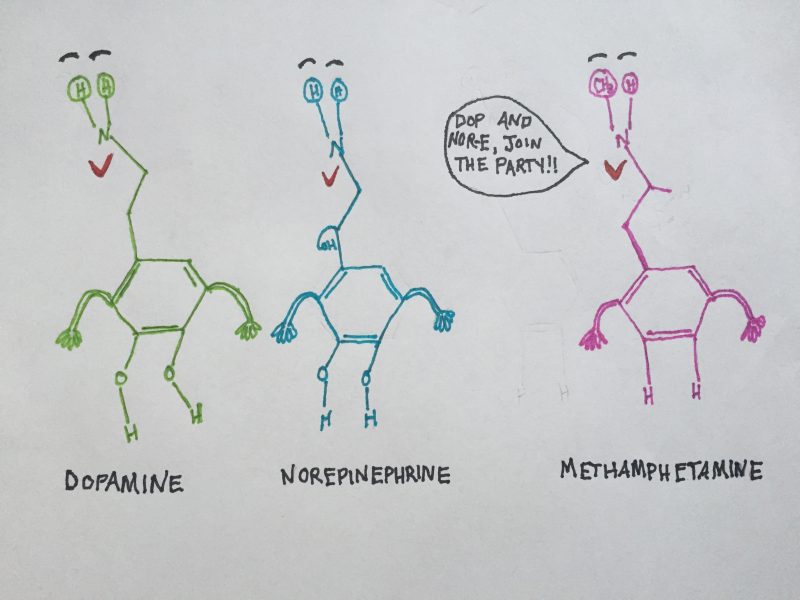Evolutionarily, humans have been wired to perceive feelings of pleasure based on certain stimuli that are associated with survival of the individual or species. Stimuli that evoke this reward system include sexual pleasure, foods, drinks, and success to list a few. Stimuli activate the mesolimbic dopamine pathway which originates in the ventral tegmental area (VTA). When VTA neurons are activated, dopamine release is increased at the synaptic cleft of the nucleus accumbens (NA). Both the NA and the VTA are associated with motivation due to the long-term potentiation that occurs. Under natural stimuli, dopamine is invited to the cleft tea time party and leaves after a short while. However, humans have found and developed different more intense ways to satisfy the reward system that aren’t natural “survival stimuli.” The use of drugs.
Drugs activate the same reward pathway which is a large proponent of their addictive nature. Mainly, drugs act to increase dopamine and other neurotransmitters in the synaptic cleft of the NA to induce the feelings of pleasure. Dopamine causes D1 receptors to fire action potentials which then begins a signal cascade in the neurons. If neurons are fired regularly, AMPA receptors increase in number and become more active which leads to long term potentiation and memory formation. Continual use also changes the size and shape of neurons. Once neurons change, they are unlikely to return to the original form.

Increasing dopamine and other neurotransmitters in the cleft can be achieved in many ways and therefore is variable for different drugs. Below are a few commonly used drugs and how they increase dopamine in the cleft.
- Cocaine inhibits the re-uptake of dopamine, allowing the dopamine to act for a longer period of time at higher concentrations.
- Opioids inhibit GABA which inhibits dopamine, therefore increasing dopamine activity.
Cocaine and opioids are addictive because of the increased D1 activation that induces a signal cascade resulting in synaptic plasticity, memory formation in the motivation centers.
In the recruitment of dopamine and norepinephrine to the cleft party, cocaine and opioids are sorely incompetent compared to methamphetamine. Cocaine and opioids throw an intimate slumber party with only their closest friends while methamphetamine invites the whole college campus and advertises free root beer at a weekend long music festival.
- Methamphetamine induces the release of dopamine in four different ways, induces the release of norepinephrine in two ways, blocks re-uptake of the neurotransmitters, and blocks their degradation.
For this reason, methamphetamine is highly addictive and difficult to quit. Even small amounts of methamphetamine cause massive recruitment of neurotransmitters. The neurotransmitters induce the same signaling pathway through D1 receptors and leads to the expression of genes that are associated with addictive behaviors. Some of these genes encode proteins that are further involved in long term potentiation and learning, such as in the case for delta FosB. These processes cause damage to the synapse that can never fully be repaired.
Therefore, methamphetamine addiction should be avoided at all costs or treated early on. Even early treatment may not be enough to reverse the damage that has been done. Though these drugs provide incredible rewards for an individual, their temporary effects are not worth the lifelong consequences.
